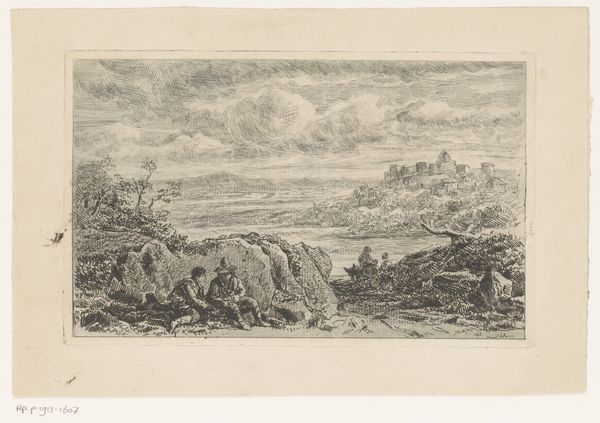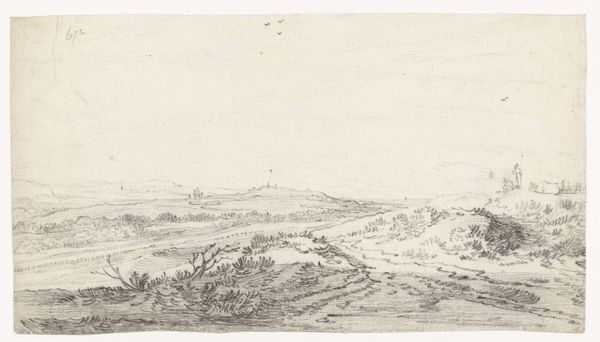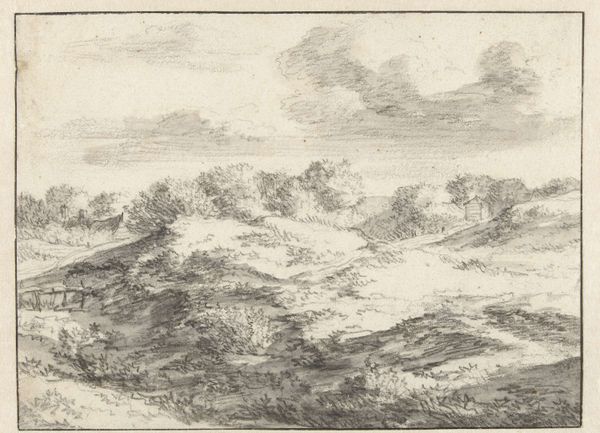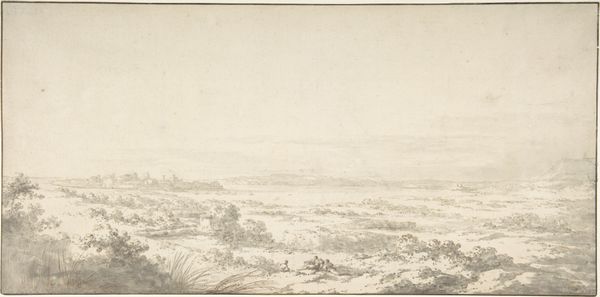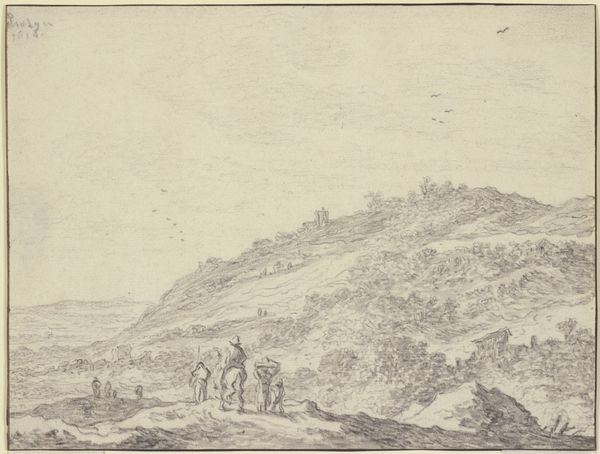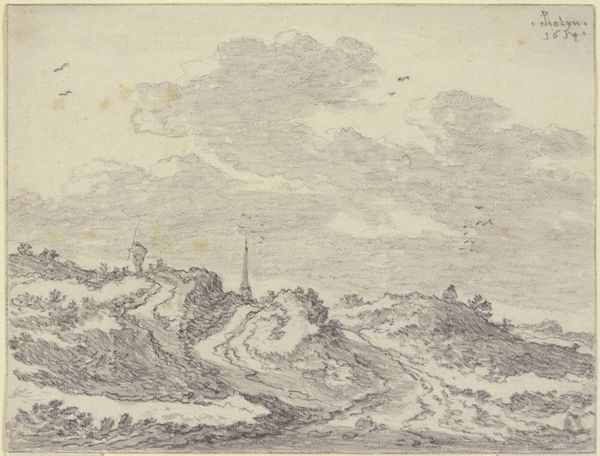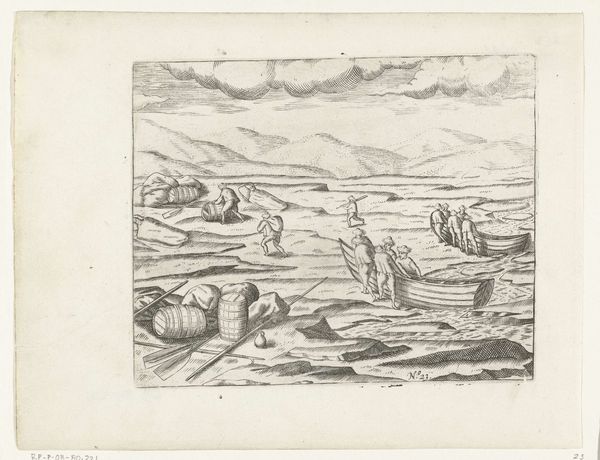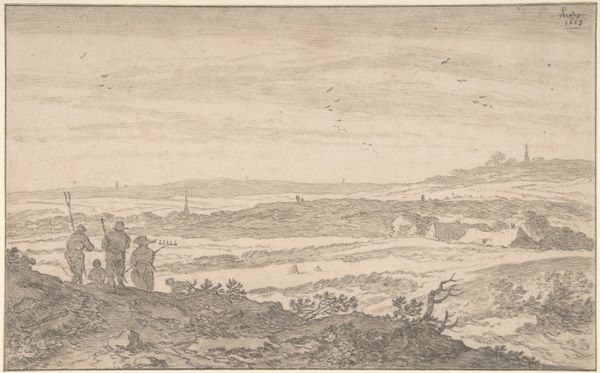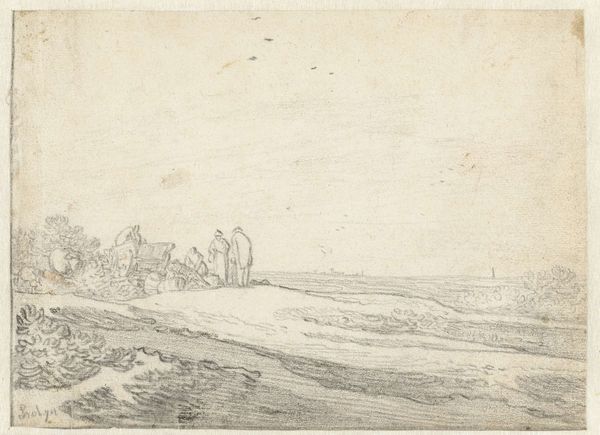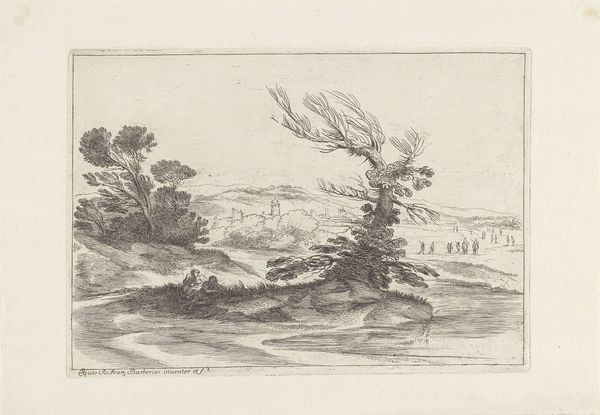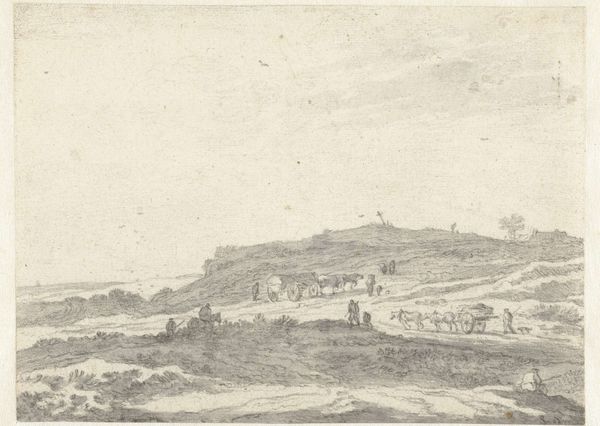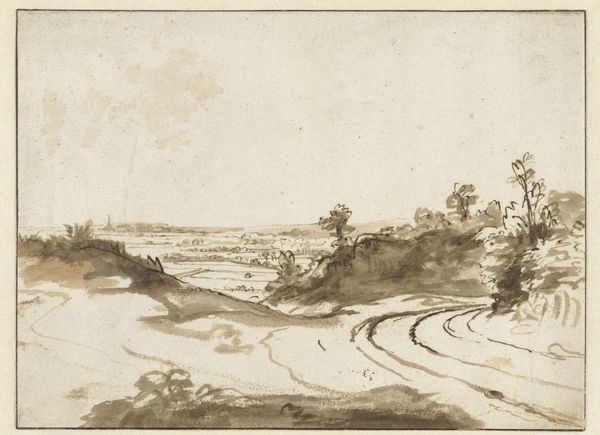
drawing, ink, pencil
#
drawing
#
dutch-golden-age
#
landscape
#
ink
#
pencil
#
line
#
realism
Dimensions: height 190 mm, width 302 mm
Copyright: Rijks Museum: Open Domain
Editor: So, this drawing is called "Gezicht uit de duinen op het Huis te Kleef bij Haarlem" which translates to "View from the Dunes on the House at Cleves near Haarlem," and it’s by Aelbert Cuyp. The listed creation date spans from 1630 to 1691. It's rendered in pencil and ink. I’m struck by the contrast between the wildness of the dunes and the implication of labor in the distance. What’s your take on this piece? Curator: Given Cuyp’s broader body of work often celebrated Dutch landscapes, what interests me is the tangible connection to the labor embedded in that landscape. We see what appear to be natural elements: dunes, sky, foliage. However, consider the materials used - pencil and ink. How accessible were these? To whom? Editor: That's interesting. I hadn't considered the accessibility of the materials. I guess I just assumed everyone had access. Curator: Precisely. The paper itself represents a level of consumption. Consider the implied labour within this image. There’s likely an economic interplay depicted that shapes the very land. Even that castle in the distance -- someone had to pay for it! Where did that money come from? Editor: So you're saying the materials themselves, like the ink and pencil, and even the scene depicted, hint at underlying economic systems at play during that era? Curator: Exactly. The material reality isn’t just about the aesthetic outcome, it is related to its process, from where the raw materials are derived to the artistic labour. Editor: It’s made me appreciate art in a totally different light, I was so focused on its aesthetic qualities rather than what actually makes art “art”. Curator: Absolutely, and hopefully, this approach lets you begin seeing artworks less as singular visions and more as tangible nodes in a complex network of making, labour, and consumption.
Comments
No comments
Be the first to comment and join the conversation on the ultimate creative platform.
